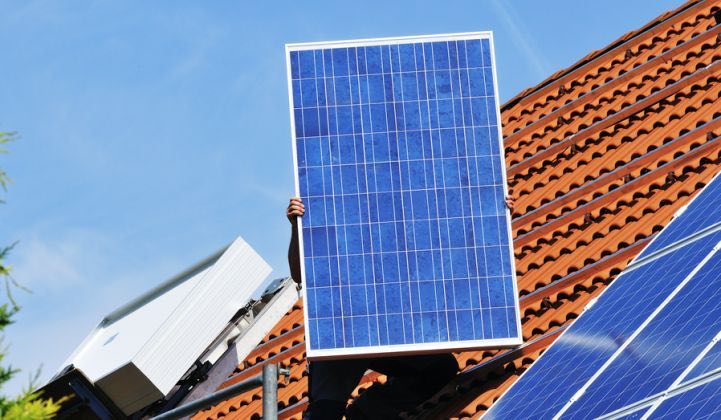



Australia’s Clean Energy Regulator has published its latest report on the quality and safety standards of the nation’s millions of rooftop solar systems, and it’s encouraging news.
The data shows the proportion of unsafe and potentially unsafe PV systems has fallen from a peak of 5.5 per cent for 2014 installations (0.7% unsafe and 4.8% potentially unsafe) to 1.7 per cent of inspections in 2018 (0.7% unsafe, 1% potentially unsafe).


A decrease in safety issues detected in rooftop solar systems around the country is a welcome development, particularly in light of the huge growth in the market in recent years.
As the report notes, the data puts home solar systems on par with general electrical work in terms of the level of safety risk involved.
Clean Energy Council chief Kane Thornton welcomed the news as evidence that improvements to safety measures to protect both installers and consumers were working.
“More than one in five Australian households have solar on their roofs, and what this report tells us is that the vast majority of these systems are installed safely and in line with the industry guidelines set out by the Clean Energy Council’s Solar Accreditation program,” he said in a statement on Wednesday.
But Thornton also warned that neither the industry nor consumers should become complacent about the quality or safety of solar systems.
“While these results are trending in the right direction, there is still work to be done. The report highlights the need for regular solar power system maintenance, and the need to raise consumer awareness about the need for an annual maintenance schedule, just like servicing your car.
“The report also recommends that the industry consider the technical requirement for rooftop DC isolators to be installed. This is an issue that we have been closely involved with for many years, working with Standards Australia and the state electrical safety bodies to mitigate the potential risk they pose.”
The CER deems a rooftop solar system unsafe when it is found to pose an “imminent safety risk” at the time of inspection, from such things as exposed live parts or panels that have not been properly secured.
Solar systems deemed potentially unsafe are those that may become unsafe without timely maintenance, but do not pose an imminent risk. In this category, the CER says the most common offender is the DC isolator – a disconnection switch that stops electricity generated by a PV system flowing through the circuit of a system.
The report finds that water ingress in rooftop DC isolators and DC isolators near the inverter is the most common cause of potentially unsafe PV systems. A small proportion of DC isolators were also found to be incorrectly wired or installed.
This remains a point of contention in the industry, with Australia the only country in the world that requires rooftop DC isolators – a requirement supposedly introduced at the request of fire and emergency services to enable their members to isolate the DC power.
The trouble is, they have also been linked with an increased likelihood of fires caused by rooftop solar systems.
In 2015, a number of industry bodies proposed removing the rooftop DC isolator requirement from the Australian Standard, but the two committees considering the proposal could not come to an agreement on the matter.
The current review of the Australian Standard for PV installations is again considering whether to remove the rooftop DC isolator requirement. And the CEC has recommended requiring the DC isolator to be inside the inverter, rather than as a separate switch near the inverter, to prevent water ingress. Indeed, some inverter models already have an internal DC isolator.
Thornton said consumers should use two measures to ensure their solar is installed correctly: choose an Approved Solar Retailer, and; make sure the installer who completes the work is accredited by the Clean Energy Council.
“The small-scale solar and storage industry has done a good job of earning the trust of Australians,” he said.
“Now we need to maintain this trust by continuously improving our safety levels. By enabling Australians to make the switch to rooftop solar with peace of mind, they can reduce their energy costs while combatting climate change and accelerating our transition to a clean energy future.”
Sophie is editor of One Step Off The Grid and deputy editor of its sister site, Renew Economy. Sophie has been writing about clean energy for more than a decade.
This post was published on June 25, 2020 11:18 am
Iconic Australian hardware and garden store says it has reached 100 per cent renewables, with…
Data used to showcase the downward impact of renewable energy on power prices contained a…
Most so-called ‘community batteries’ are actually installed by electricity networks, but this local group managed…
Rising energy bills are driving a surge in complaints. The NSW Energy Ombudsman wants better…
Australians are often being misled when they try to make sustainable electrical appliance choices, and…
China EV giant bows to trend of offering "complete solutions" for home energy, with launch…